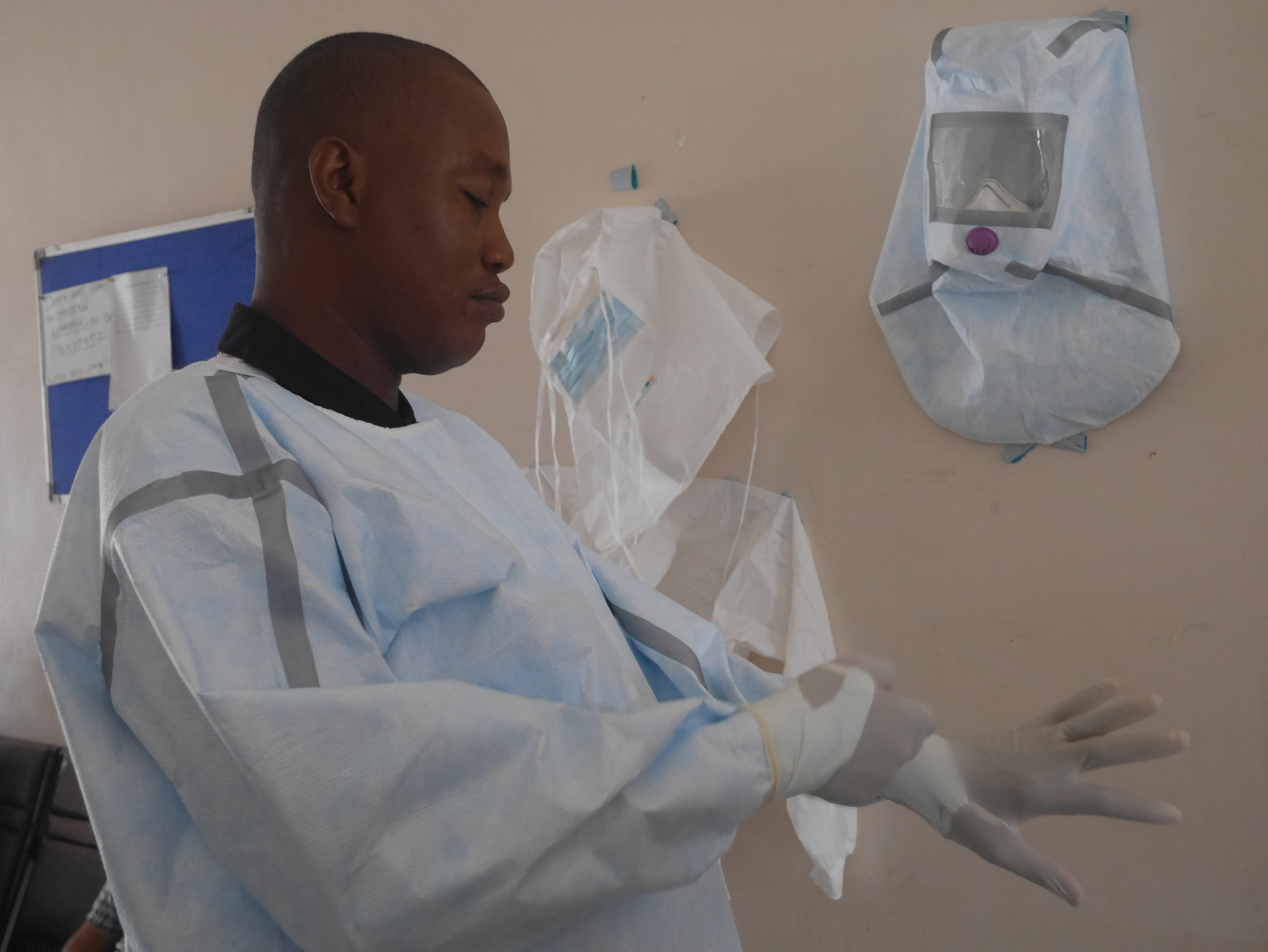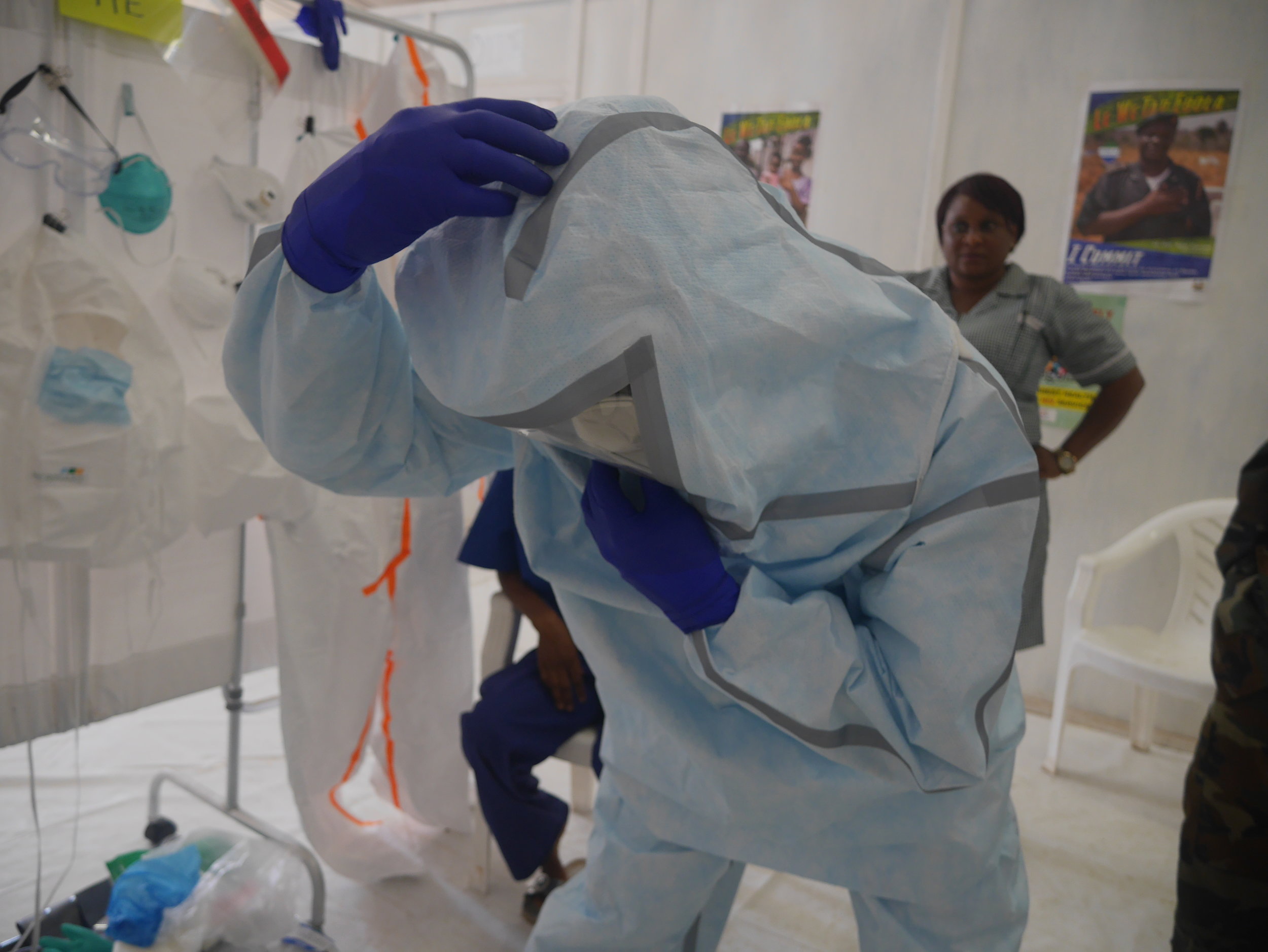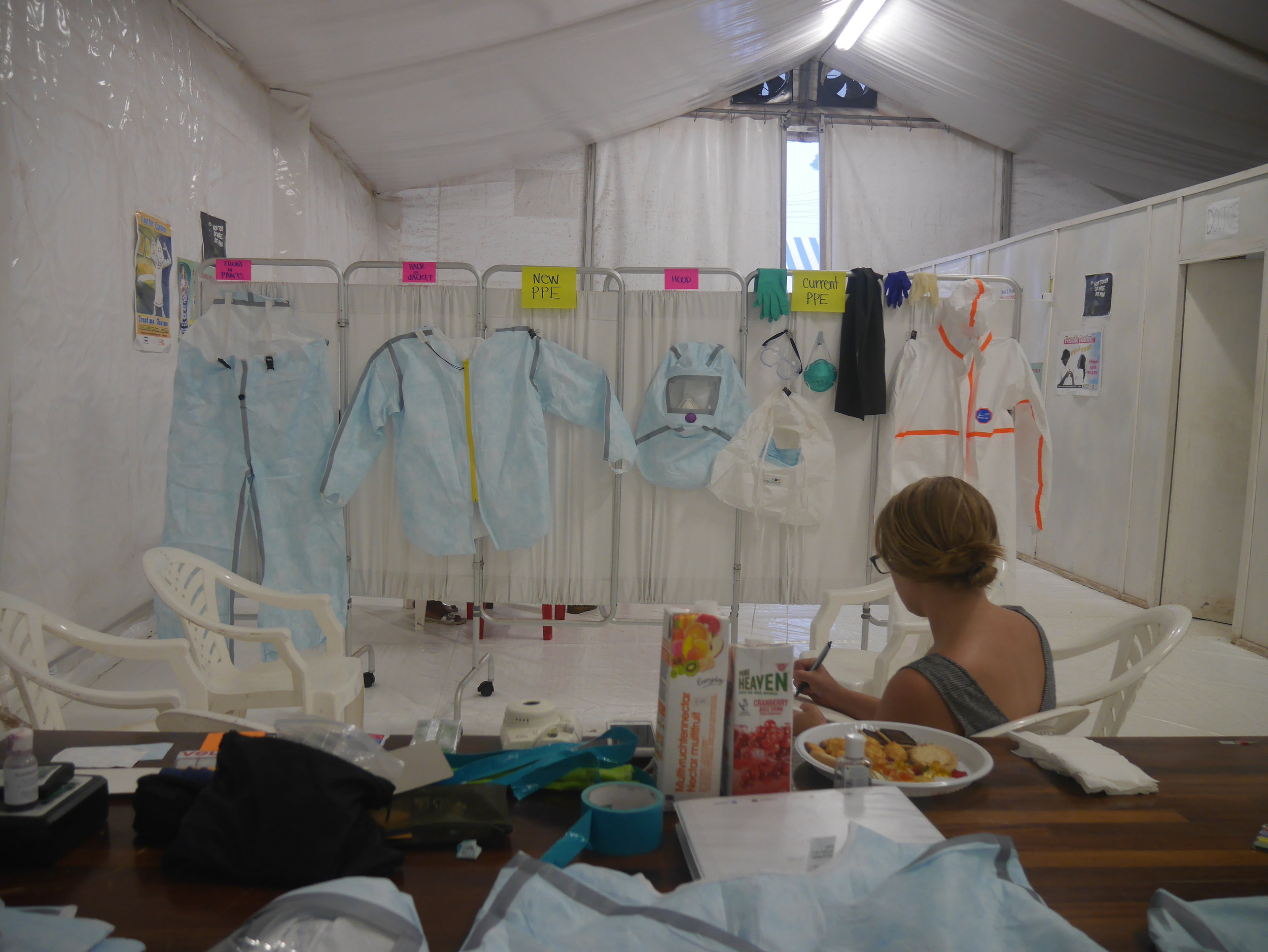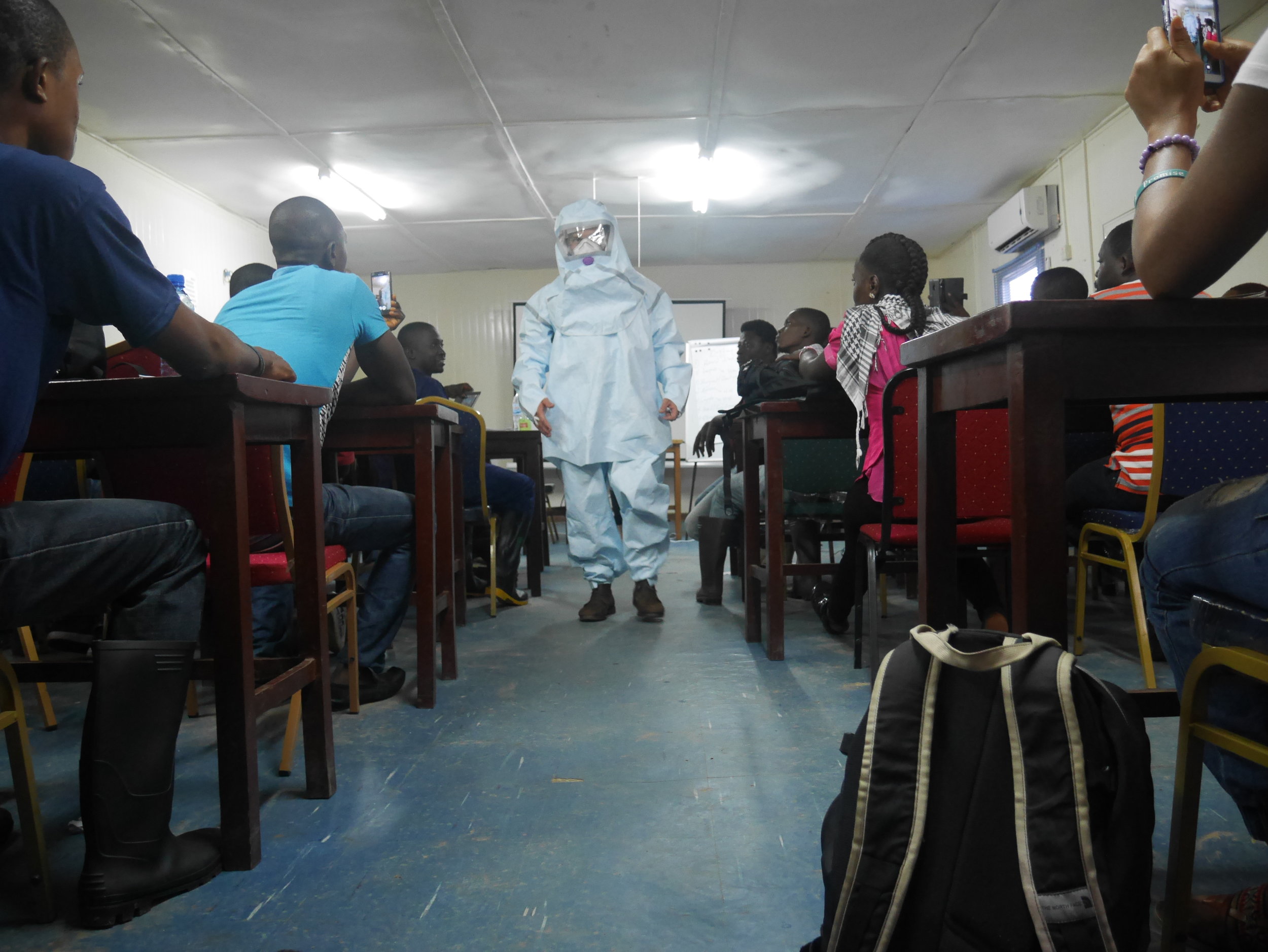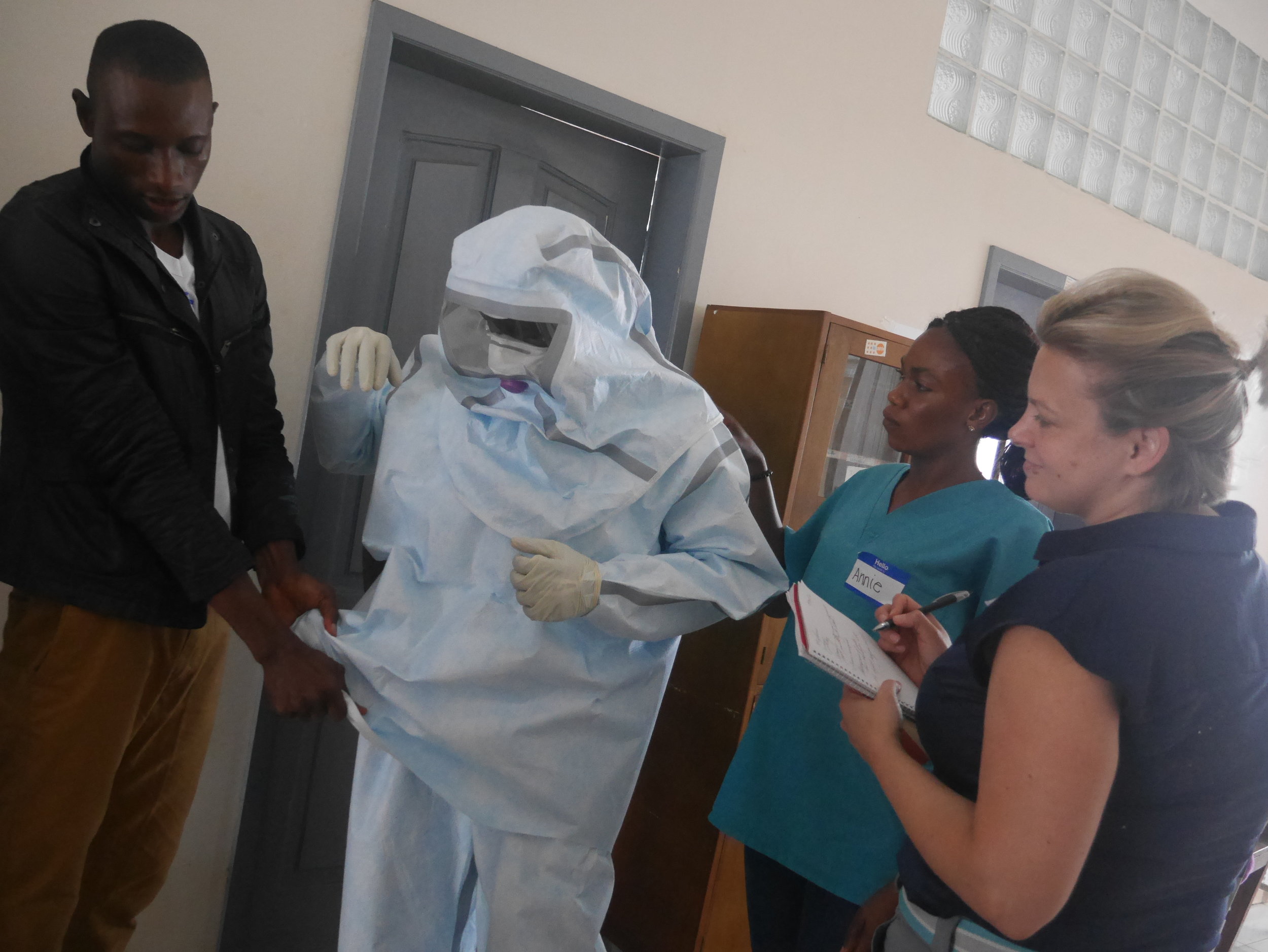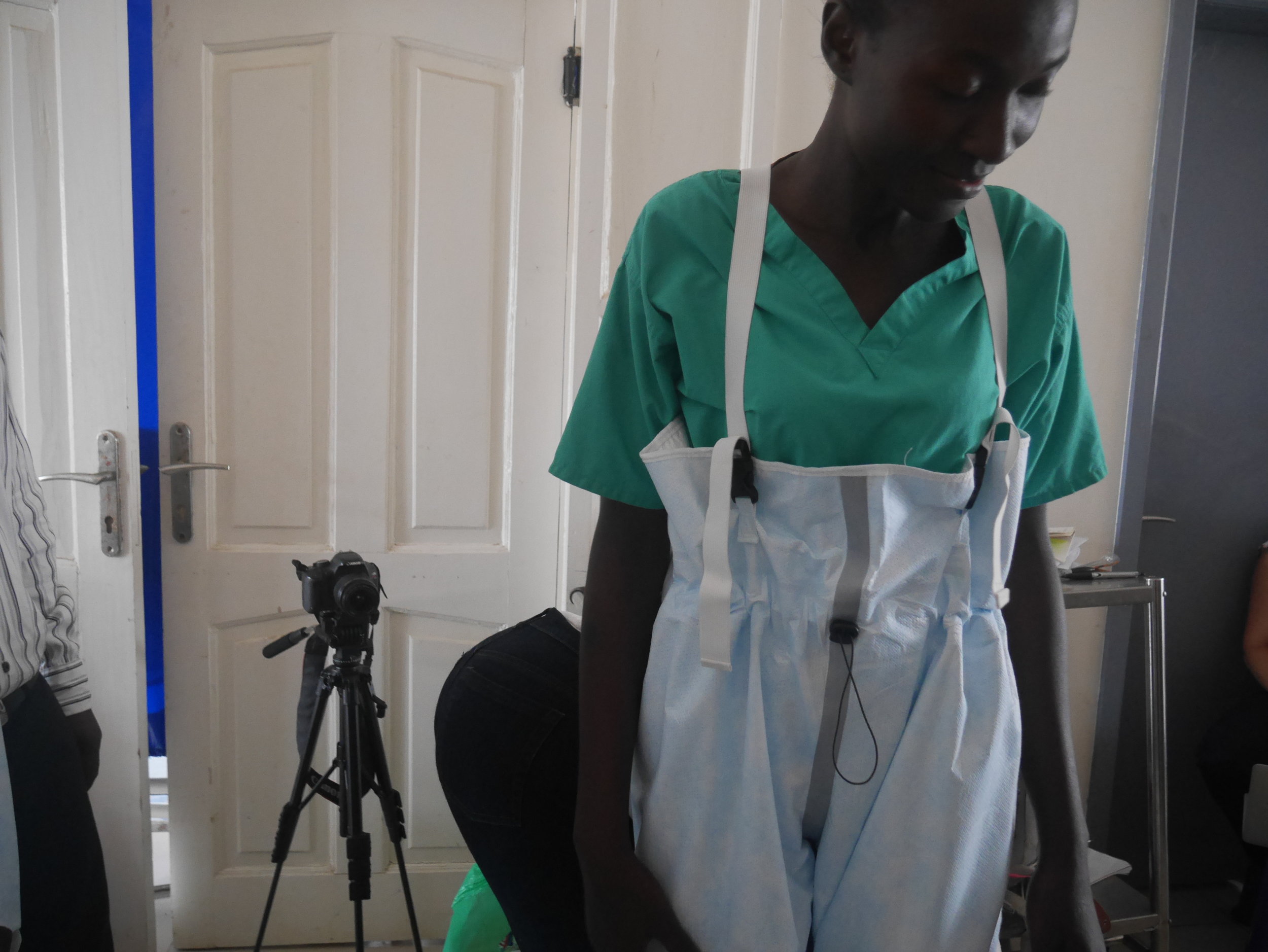Personal protective equipment (PPE) can be lifesaving for healthcare workers, but it can also be cumbersome and prevent them from doing their jobs well. During the Ebola crisis, the PPE caused extreme discomfort -- the impermeable materials trap heat inside; the goggles frequently fog which reduces the worker's visibility; hoods and masks interfere with the ability to communicate with patients; and the process of donning and doffing the suits is meticulous and slow, and when contaminated, can result in spreading infection to the wearer.
This project supported International Personnel Protection (IPP) in refining their product features by collecting feedback from frontline Ebola healthcare workers. In addition to ensuring the needs of the end user were captured in the current product design, the issue of the availability of quality PPE to frontline workers from a production perspective for Kappler was addressed, the suit material supplier and manufacturing partner to IPP.
Research: collecting feedback from frontline healthcare workers
This work consisted of two weeks in Sierra Leone collaborating with the frontline health workers responsible for responding to the Ebola outbreak. It was quickly learned that for these health workers, personal protective equipment elicits a physical, emotional, and visceral response. During the crisis, it became clear that the components of a PPE ensemble were not an integrated system of protection. Coveralls, goggles, and hoods were mismatched and the protocols for using the equipment were unclear or irrelevant for the equipment at hand. In dire circumstances, health care workers adapted the inferior products they had to create new solutions on their own. One doctor said,
"We were like kids playing dress-up. We took things up, we tore it to make it work. We changed things all the time. We just tried to fix the problems ourselves."
During this product feedback trip, the new IPP PPE prototype was adapted and altered based on feedback from multiple doctors, nurses, hygienists, and burial teams. Their current product stock was compared to this prototype, role playing was conducted where they practiced putting on and taking off the suit, and different scenarios were tested, like calming down an overactive patient.
These are the six design research methods we used to collect feedback from Ebola frontline workers, such as doctors, nurses, Ebola survivors, hygienists and burial teams.
Concepting: refining product features to improve usability
To start making modifications to the prototype, the focus turned to makeshift solutions that the health care workers thought up on their own during the crisis. The changes that the health workers made to their existing PPE served as clues to the features and protocols that a new generation of PPE should incorporate. After a few days of initial insights, the prototypes were taken to a tailor in Victoria Park Market in downtown Freetown to refine the suit design for further user feedback. This series of the user feedback provided prototype changes that were incorporated into the final design. These changes were further validated through additional laboratory testing to fix the suit design to enable efforts for approach production and marketing of the product.
Strategy: understanding demand for suit production
With the focus of this work on feature design, new areas of exploration were identified moving forward. This includes defining the market opportunity beyond contagious fluid-borne diseases like Ebola, potentially expanding into broader applicability in infectious disease control or even opportunity in adjacent markets. Additionally, looking at price sensitivity as well as demand assessment would help to understand the production run for the manufacturing capability for unique material that is a reliable protective barrier for viral hemorrhagic fevers, but still breathable for health care worker comfort.


